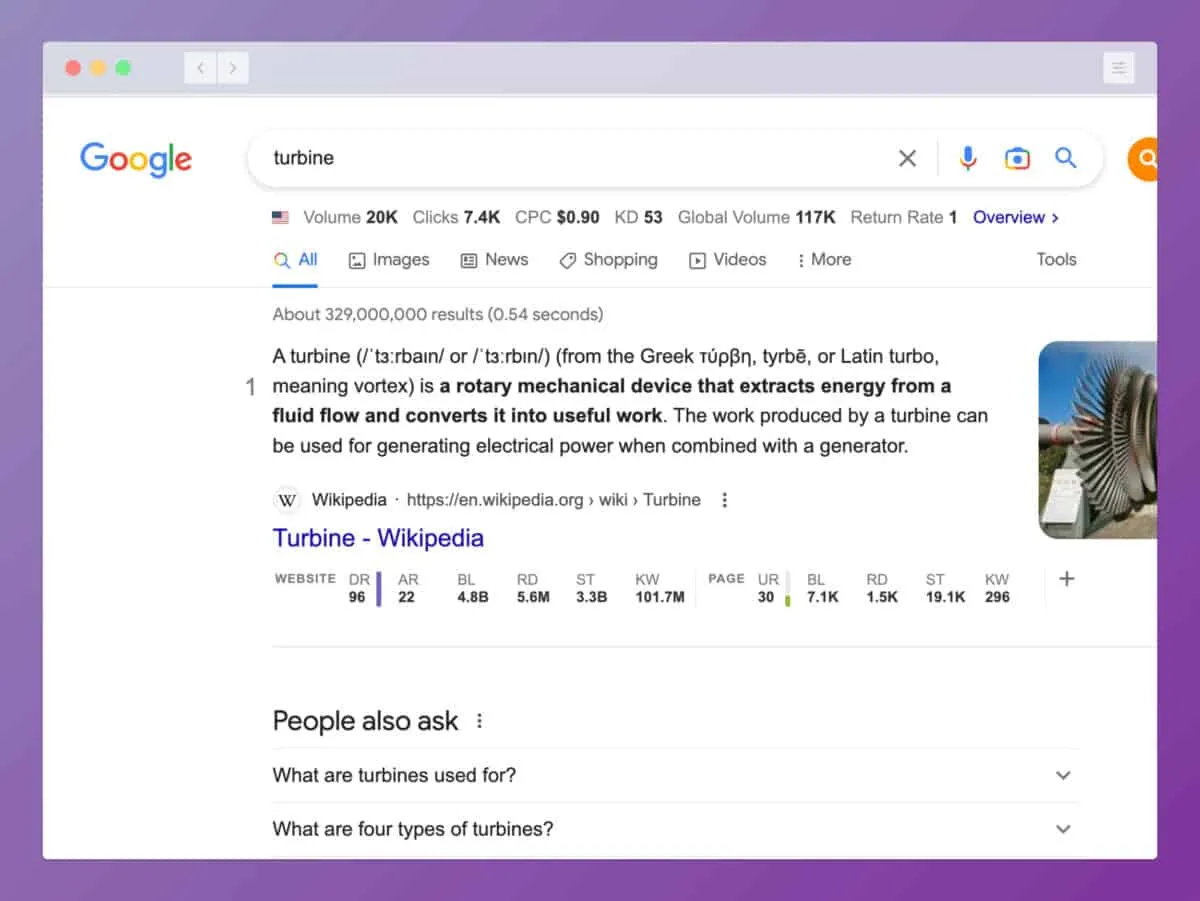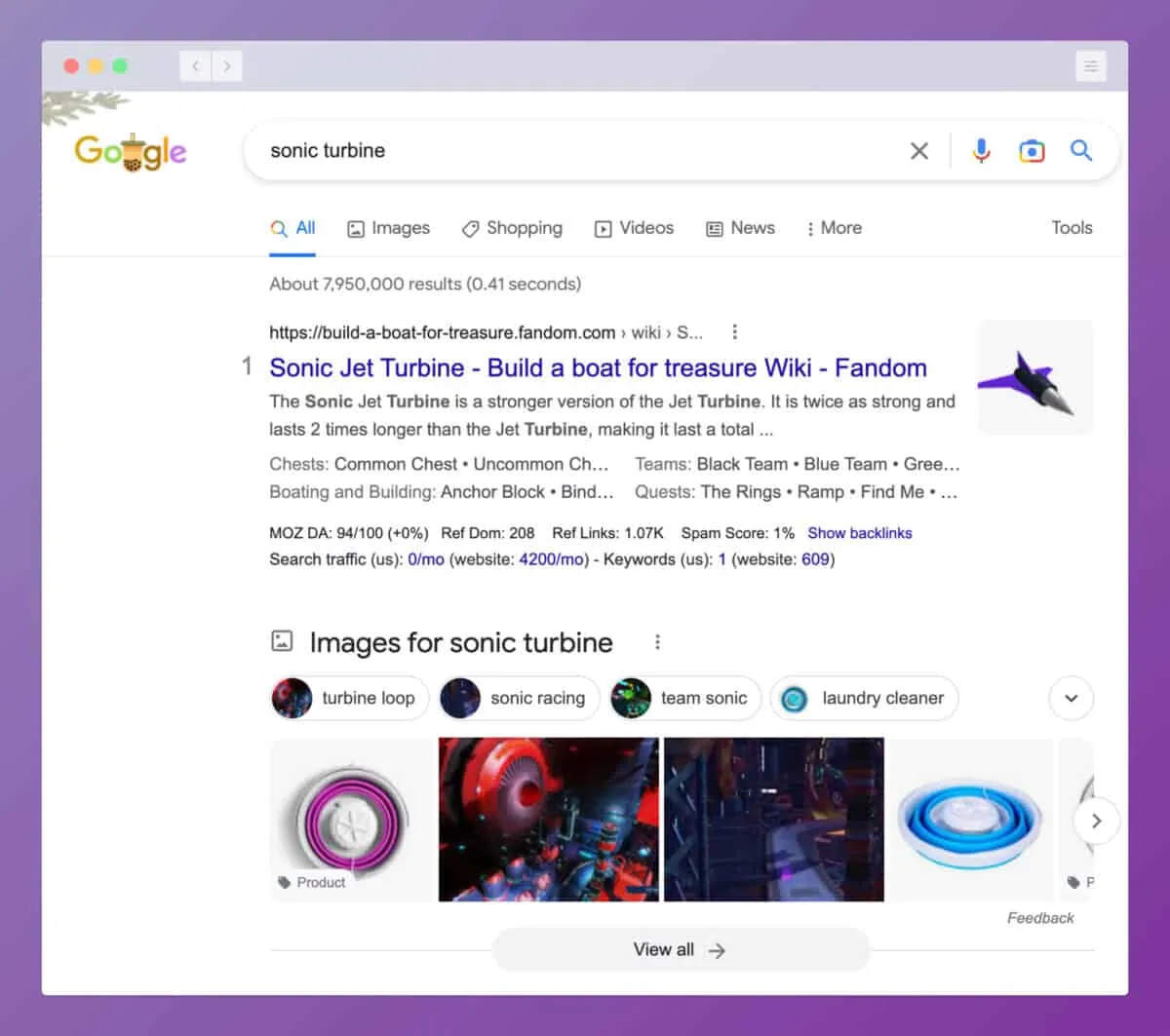How to Choose a Business Name - 7 Rules You Need to Know

- Rule 1 - You must be #1 on Google for your name.
- Rule 2 - Don’t Use Misspelled Words
- Rule 3 - It has to be easy to pronounce
- Rule 4 - No more than two words (4 syllables total)
- Rule 5 - Don’t Use Double Letters Between Words
- Rule 6 - You Have to Own the .com
- Rule 7 - You Have to be Able to get the trademark
- Summary
Choosing a good business name is more critical than ever. While many people cover the legal aspects of selecting a business name, marketing is equally important.
You need to own your name from a legal and marketing mindshare perspective. Choosing the wrong name can predetermine the success of your business before you even start.
Rule 1 - You must be #1 on Google for your name.
Google is the Internet. People don’t type a web address anymore; they Google the business name (people Google Facebook instead of typing facebook.com into the address bar).
Imagine you had decided on the name Turbine Corp. You like how the name conveys your products are fast and reliable. But what are the chances you will show up as #1 when people search “Turbine”?
Here are the current results for the search term “turbine.”

Turbine SERP
No amount of SEO (search engine optimization) will make you the #1 result. Google always wants to show the best search results to its users. Google is doing the right thing here by describing a turbine, some pictures illustrating some turbines, and a link to the Wikipedia page.
The Investment required to dethrone a common noun is quite steep. Wave Accounting took over the search term “wave” because Google noticed that most people searching for “wave” were looking for Wave Accounting.
How can I tell if I’ll be able to rank #1?
Google is looking to match the search term with the best result. We should check the search results for any potential name we wish to use. Suppose our name is “Turbine Media,” and the current first result is “Turbine Shop, a dutch company.” You’ll likely be the #1 name a month or two after launching your website.
We must dig deeper if the first result is a Wikipedia page. Using our “turbine” example, we’re unlikely to beat Wikipedia from the number one spot. They have a high-ranking article dedicated to turbines.
By calling my company Sonic Turbine, I’d add more specificity to the search term. Looking at the Google results for “sonic turbine,” I see a handful of images and a random page on Fandom. This search term should be easy to rank in the top spot.

If you need to figure out how difficult it will be to rank for your business name, consult your SEO expert before finalizing a business name.
Action Items
-
Google the business name you are thinking of choosing.
-
Verify that your name is unique within your market
-
Check if the first result is Wikipedia and how close it is to your name
Rule 2 - Don’t Use Misspelled Words
People love strange names, misspellings and funky words. Whether it’s TikTok, Reddit or Lyft, names with tweaked spellings are all over the place. Even Google is famously a misspelling.
What the above companies have that you don’t have is massive marketing and brand budgets. Tiktok and Lyft spend upwards of $100 million on advertising and brand. The branding is so pronounced that if you Google “tick tock”, Google will actually recommend “tik tok”

As a small business owner, you need to be clear and decisive. You’re in trouble if you have to spell your name out over the phone.
You could get creative and get a few extra letters in there. Turrrrbine because the additional Rs make it spin faster. It’s not going to work. No one will search for it correctly, and Google won’t list it accurately.
Don’t Use Words with Different International Spellings
Some words are off-limits because they have different spellings in different countries.
-
color/colour
-
tire/tyre
-
humor/humour
-
labor/labour
Even if you are confident you’ll never operate outside your home country, it’s still best to avoid these words. People in your Country may spell things differently than you do, especially as our youth are trained to act more internationally.
Made-Up Words are Fine
If you can’t find a word you like, you can always make some up. Significant examples include Pinterest, Gmail, Twitter, and FedEx. No other company has names similar to these, so they stand out and are always #1.
A friend of mine called his company Hantera. He runs an IT consulting company. Hantera is slang in Swedish for “help manage.” By calling his company Hantera, no other company outside of Sweeden knows where it comes from. It’s unique, and he gets to tell the story behind his brand.
Action Items
-
You need to use correctly spelled words in your name
-
Verify there are no International spelling differences in your name
-
Make up some words if you are having trouble
Rule 3 - It has to be easy to pronounce
How often have you been on the phone with someone, and they say back to you, “Can you spell that please?”. Language is hard enough to master, and we complicate it by making words like pneumonia and knight.
Make sure your business name doesn’t need to be spelled out. There are times when you’ll be at a tradeshow or in a noisy environment, where you won’t have the opportunity to spell it out to your audience.
Imagine for a minute that you named your security consulting business Knight Guard. You think this is an excellent name because you “guard” your customer’s security like a “knight.”
You discuss your services at a trade show with a huge prospective client. Your prospect has to run, but he promises to check you out later today.
He Googles on his phone “night guard.” You don’t come up.
“Was it nite guard?” he thinks to himself.
“I’ll try nightguard.com to see if that works.”
He fails again. He gives up. Sale lost.
Your client heard “knight” like “night” because he thought you protected his stuff when people were sleeping (when most security incidents happen).
Action Items
-
Can out shout your name from across the room and have it be understood?
-
Are there any words in your name that could be misinterpreted?
-
Say your name to 5 people, and have them write down what they heard.
Rule 4 - No more than two words (4 syllables total)
Less is More. You want your name to be as short and sweet as possible. Everything about your name will dictate how your logo looks, emails appear and the flexibility of your branding.
Keep your business limited to two words. Each word should be either descriptive or unique. Examples of excellent short names include Fuel Media, FedEx, Amazon, WorkBoss, and QuickBooks.
Our words also need to be short and succinct. Long words will put us into spelling issues, long logo formats and email addresses that won’t fit on business cards.
Suppose I named my business Superintendents International. In that case, I’d be at two words, but the possibility that someone mistypes my email address is relatively high. Plus, I would need much more space to fit [email protected] on a business card.
Action Items
-
Have you limited your name to 2 words or less?
-
Is each of the words seven characters or less?
-
Do all the words together have four syllables or fewer?
Rule 5 - Don’t Use Double Letters Between Words
Using two short words together is a great way to create a unique business name. Whether both words are sta or not, the two words will give it flair. Great examples are OpenPhone, GitHub, HubSpot, and YouTube.
You must avoid two words where the last letter of the first one is the same as the first letter of the second word. Examples of this would be PayYou, NameExpert or ReadDeeper.
When these names get converted into domains and email addresses, they become hard to read and often end up getting a letter dropped (payyou.com, nameexpert.com, readdeeper.com)
Using the above examples, changing the words around would be clearer (YouPay, DeepReader). I’ve shorted Deeper to Deep and expanded Read to Reader to make the name flow better.
Use synonyms to find names that mean the same thing if you run into letter collisions. For example, NameExpert would become NameAdvisor.
Action Items
-
Make sure you are not colliding two letters together between words
-
Switch words around, so the letters don’t collide
-
Change words using synonyms where you need to
Rule 6 - You Have to Own the .com
There are hundreds of various domain extensions you can buy for your business. Buyers are no longer limited to the standard .com, .net and .org. We have dozens of Country Code domains people use for generic purposes (.io, .ai) and hundreds of vanity domains (.online, .store, .digital).
I’m here to tell you, you still need to own the .com. If you don’t own the .com, someone else does, which puts you in competition with your name.
Your website is your primary business location. It’s the storefront that everyone sees first. It’s the office that never relocates. It’s the phone system, the mail system, and the front line of communication with your customers.
Can I use a country-code domain name (.ca, .co.uk)?
You can, as long as you still own the .com. For instance, if your business operates only in Canada, you can register and use the .ca as your primary domain name. But the .com version must redirect to the .ca version.
For example, turbinemedia.com would redirect to turbinemedia.ca. Email addresses should also be aliased, so [email protected] forwards to [email protected].
What do I do if the .com is not available?
It is hard to find two words together that aren’t registered as a .com. However, this doesn’t mean that the .com isn’t available for purchase.
70% of registered domains are not actively in use and are registered by companies that sell the domains for a markup. FuelMedia.com was registered in 1997, but we acquired it in 2019 from the owner.
How much should I pay for the .com?
This question depends on the value of your business. You need to think of buying a good domain name like you would for purchasing equipment to run your business or leasehold improvements to your office.
I’ve seen businesses that paid $100,000+ on leasehold improvements for an office they were leaving in 3 years but wouldn’t spend $5000 to own their name as a .com.
You don’t want to wait too long for your business to get recognized and popular. If the seller knows you are committed to a name, that puts the negotiation power in their favour.
For example, when Facebook was using thefacebook.com, Facebook ended up paying $8.5 million to get facebook.com. The sellers knew Facebook was committed to that name and had to pay just about any price.
Suppose you don’t know how to negotiate a reasonable price on a domain or where to find aftermarket domains. In that case, I suggest using a domain broker to help you. Good domain brokers will save you way more money than their fees.
What should I do if the .com is beyond reach?
You’ll have to get creative if you’re committed to a name but can’t get it as a straight .com.
In 2015 when I started Yab, I wanted yab.com. Three-letter domains are incredibly valuable, and this one was no exception. The seller wanted $750,000 for the domain.
This was completely out of reach for me as a startup, so I got creative. I settled on using yabhq.com but committed to the branding around HQ. I used YabHQ for all my social handles, our code repositories on GitHub, and even our WiFi said YabHQ.
Your goal is to be consistent. Don’t use one name for some places and another for others.
Action Items
-
Get the .com for your name
-
Negotiate with a domain broker to acquire your domain name
-
Get creative with your .com but be consistent
Rule 7 - You Have to be Able to get the trademark
Trademarks are often an afterthought in naming a business or brand. I often see businesses running into trademark issues years after their business has been in operation.
Much like owning the .com for your business, you don’t want to compete with someone else for your name. Suppose you can trademark your business name. You ensure no other business can use it within your market (most trademarks are limited to the scope of your business segment, but there are some exceptions).
You need to own the trademark for the Country you live in and the US. Even if you don’t operate in the US today, get the US trademark. The US trademark is still the most valuable trademark system in the world and has some International value as well.
Trademarks are complicated, and all the intricacies are beyond the scope of this article. Needless to say, you want to have control over your name and brand.
Trademark your operating name and your logo if you can. If you have any unique icons or symbols, try to trademark those as well. You don’t need to trademark every icon or typeface. Copyright law still protects you here.
Action Items
-
Find a good trademark lawyer in your Country and the US
-
Register your name in your Country and the US
-
Ask your lawyer if you need to trademark your logo or any icons
Summary
You’ve put your name through our 7-rule checklist and come out the other end with a unique and brandable name to take to market.
Bookmark this page or print it out as a checklist. When coming up with new business names, products or brands, refer to the seven rules to ensure no rules are being broken.